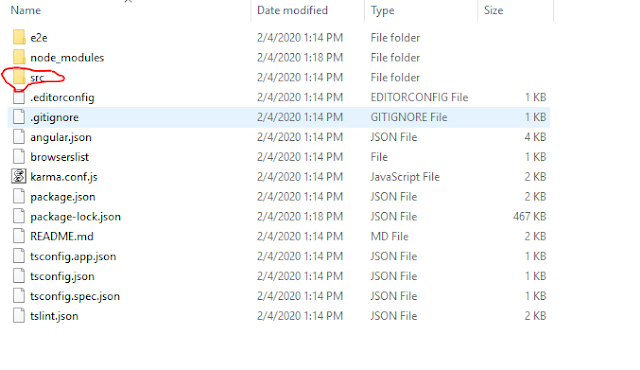In this blog, lets check how we can push the data to solace mq or solace queue using JMS. Message queues are the endpoints which guarantees you the delivery of a message without fail.
So to implement the Java code to push messages, first add the below dependency in pom.xml file if you are using the maven project in case.
<dependency>
<groupId>com.solacesystems</groupId>
<artifactId>sol-jms</artifactId>
<version>10.10.0</version>
</dependency>
You can find the latest version of sol-jms from Solace Queue Maven
Below is the sample program to push the message to Solace Queue by using JMS. Please enter your queue connection details.
package com.services.impl;
import java.util.Properties;
import javax.jms.Connection;
import javax.jms.ConnectionFactory;
import javax.jms.DeliveryMode;
import javax.jms.JMSException;
import javax.jms.MessageConsumer;
import javax.jms.MessageProducer;
import javax.jms.Session;
import javax.jms.TextMessage;
import javax.naming.Context;
import javax.naming.InitialContext;
import javax.naming.NamingException;
import org.apache.log4j.Logger;
import com.solacesystems.jms.SolQueue;
import com.solacesystems.jms.SolTopic;
import com.solacesystems.jms.SupportedProperty;
public class PushData {
private final static Logger logger = Logger.getLogger(PushData.class);
public String pushDataToSolaceQueue(String requestText) {
TextMessage textMessageToSend = null;
String response = null;
Session session = null;
MessageProducer queueSender = null;
MessageConsumer queueReceiver = null;
Connection connection = null;
String messageID;
Properties env = new Properties();
env.put(InitialContext.INITIAL_CONTEXT_FACTORY, "com.solacesystems.jndi.SolJNDIInitialContextFactory");
env.put(InitialContext.PROVIDER_URL, "enter providerURL");
env.put(Context.SECURITY_PRINCIPAL, "enter userName");
env.put(Context.SECURITY_CREDENTIALS, "Enter password");
env.put(SupportedProperty.SOLACE_JMS_VPN, "Enter VPN Name");
env.put(SupportedProperty.SOLACE_JMS_JNDI_CONNECT_TIMEOUT, 60000);
// InitialContext is used to lookup the JMS administered objects.
InitialContext initialContext;
try {
initialContext = new InitialContext(env);
// Lookup ConnectionFactory.
ConnectionFactory cf = (ConnectionFactory) initialContext.lookup("Enter Connection Factory");
// JMS Connection
connection = cf.createConnection();
// Create a session
// Create a non-transacted, Auto Ack session.
session = connection.createSession(false, Session.AUTO_ACKNOWLEDGE);
textMessageToSend = session.createTextMessage("");
textMessageToSend.setText(requestText);
textMessageToSend.setJMSType("mcd://xmlns");
textMessageToSend.setJMSDeliveryMode(DeliveryMode.PERSISTENT);
// textMessageToSend.setJMSReplyTo((Destination) responseQueue);
Object torQ = initialContext.lookup("request topic here");
if (torQ instanceof SolTopic) {
logger.info("assigning the request to a SolTopic");
SolTopic requestTopic = (SolTopic) torQ;
queueSender = session.createProducer(requestTopic);
logger.info("sending message");
queueSender.send(requestTopic, textMessageToSend);
} else {
logger.info("assigning the request to a SolQueue");
SolQueue requestTopic = (SolQueue) torQ;
queueSender = session.createProducer(requestTopic);
logger.info("sending message");
queueSender.send(requestTopic, textMessageToSend);
}
logger.info("pushDataToSolaceQueue() : message sent to queue is " + textMessageToSend.getText());
// remember the messageID
messageID = textMessageToSend.getJMSMessageID();
logger.info("MessageID is " + messageID);
connection.start();
response = messageID;
return response;
} catch (JMSException jmsException) {
logger.error("JMSException occurred due to " + jmsException.getLinkedException(), jmsException);
} catch (NamingException jmsException) {
logger.error("NamingException occurred due to " + jmsException.getMessage(), jmsException);
} catch (Exception exception) {
logger.error("Unhandeled exception occurred due to " + exception.getMessage(), exception);
} finally {
if (queueReceiver != null) {
try {
queueReceiver.close();
} catch (Exception e) {
logger.error("Exception in closing the Queue Receiver: " + e.getMessage());
}
}
if (queueSender != null) {
try {
queueSender.close();
} catch (Exception e) {
logger.error("Exception in closing the Queue Sender: " + e.getMessage());
}
}
if (session != null) {
try {
session.close();
} catch (Exception e) {
logger.error("Exception in closing the Queue Session: " + e.getMessage());
}
}
if (connection != null) {
try {
connection.stop();
} catch (Exception e) {
logger.error("Exception in stopping the Queue Connection: " + e.getMessage());
}
try {
connection.close();
} catch (Exception e) {
logger.error("Exception in closing the Queue Connection: " + e.getMessage());
}
}
}
return response;
}
}



















